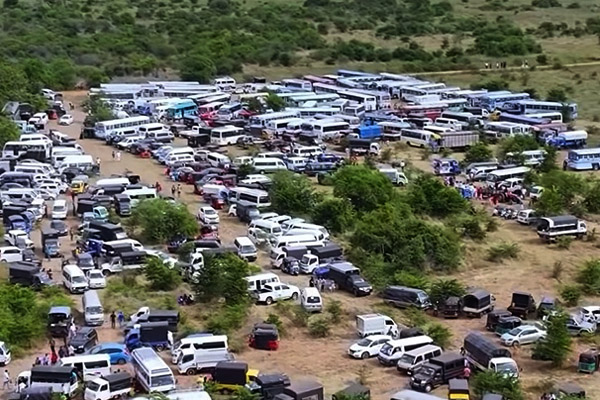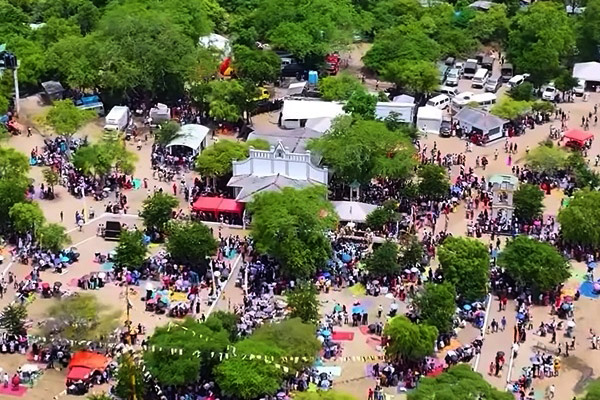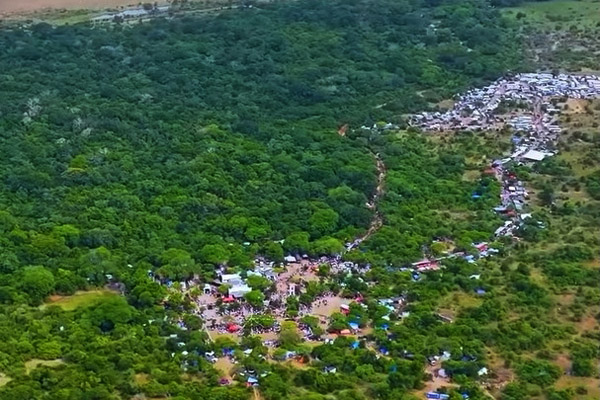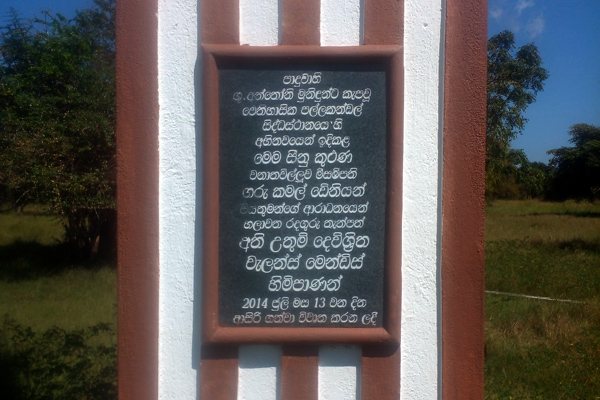By Supun Lahiru Prakash
On the 25th of February 1938, the Wilpattu National Park was declared as the second National Park in Sri Lanka under the provisions of the Fauna and Flora Protection Ordinance, No. 2 of 1937; a landmark in the history of Wildlife Conservation in this country. Facing various challenges at different times, including the atrocities of terrorism, this unique wildlife reserve has, for nearly nine decades, protected a significant area of the country's natural heritage. However, the rapid expansion of the Pallakandal shrine, and its activities, is today threatening the very existence of this National Park and has now reached a very critical point, forcing all those passionate about conservation to come together, regardless of religion or ethnicity to ensure the future of the National Park.
The largest National Park in Sri Lanka, the Wilpattu National Park consists of five zones all declared between 1938 and 1973. Spread across the Anuradhapura and Puttalam districts, this national park borders the Mannar and Vavuniya districts. The Wilpattu National Park provides an ideal habitat for a variety of wildlife, including a few elephants, and is extremely popular among local and foreign tourists as a haven for viewing sloth bears and leopards, not always easy to see. This Park is largely covered with dense forest in a way not encountered in other Dry Zone national parks in Sri Lanka, but it also has some dry zone forests, thorny forests, large open plains, sand dunes, and Villu wetland ecosystems unique to this park, and from which it gets its name. Furthermore, the red cliffs that rise immediately from the narrow coastline of the Portuguese and Dutch Bays are an attractive area within the park and contain the fossils of ancient marine creatures. Due to its proximity to the ancient historical city of Anuradhapura, the Park has ancient ruins and other human constructs belonging to various eras of history. However, after the declaration of this area as a national reserve, it became a land dedicated to the conservation of wildlife, and the protection of archaeological sites and monuments remains as a secondary service.
The Pallakandal Shrine, a Catholic shrine dedicated to St. Anthony, was a small jungle shrine in the Pomparippuwa area of the Wilpattu National Park. This small piece of land was acquired by the Government in 1969 under the Land Acquisition (Amendment) Act No. 28 of 1964 (Gazette No. 14,886 of 26.12. 1969) as Government land and, later, when Part V of the Wilpattu National Park was gazetted in 1973, the entire village of Pallakandal, including the small jungle shrine, became part of the Park.
However, after the reopening of the Wilpattu National Park at the end of the war, this church rapidly expanded further into the Park with the erection of permanent buildings around it. Moreover, human encroachment into the National Park has also increased as a result of the large-scale festivals held at the church. Every year, hundreds of thousands of devotees from all over the island gather at the church to participate in a seven-day festival, which ends on the second Sunday of July. The Supreme Court Case Number SCFR/224/2010 states that the road within the Wilpattu National Park, which is designated for use only by the Department of Wildlife Conservation, is prohibited from use by devotees who travel seven kilometers to reach the church. It is alleged that these devotees are engaged in activities that are harmful to wildlife and their habitats, such as dumping waste, setting fires, using drone cameras, walking in the Park in violation of the administrative rules and regulations of the Park, and using loudspeakers. Many cases have been filed by wildlife officials in this regard.
Several environmental organizations, too, have filed petitions in the Supreme Court against this damage to the park, and the Attorney General has also submitted Terms of Settlement No. CA/CA/82/2018 (KDP), dated November 13, 2019, regarding how the church should be operated within the park. However, in addition to the annual festival of the church being conducted in an arbitrary manner that is detrimental to the park, the church's priests are currently trying to enter the park to conduct a monthly service with a large participation of the public, on the first Tuesday of every month. This poses an additional threat to the Wilpattu National Park.
Until now, the situation was controlled due to the dedication of the Assistant Director of Wildlife in charge of the Anuradhapura Wildlife Region, the Warden of Wilpattu National Park, and the Eluwankulam Wildlife Ranger. The Eluwankulam Wildlife Ranger has to obtain monthly injunctions against this new practice and illegal road use from the Puttalam Magistrates Courts. However, it is said that the Deputy Minister of Environment of the National People's Power Government has recently promised to intervene in this situation and allow people to go through the National Park every month and perform religious rituals at the Pallakandal Temple from March 2025. It is also rumored that the Director General of Wildlife, a cousin of the said Deputy Minister, who is currently on Leave preparatory to retirement, is illegally working to grant permission for this through a Memorandum of Understanding.
We should not forget that many officers of the Department of Wildlife Conservation have sacrificed their lives to protect this piece of land. The first time in the history of the Wildlife Conservation Department of Sri Lanka that a wildlife officer died in the line of duty was in the Wilpattu National Park. On July 4, 1957, Wildlife Guard K. Menikrala was killed by a bear. On May 14, 1985, terrorists massacred 24 officers at the Wilpattu National Park headquarters; the largest number of wildlife officers losing their lives at one location. In addition, terrorists have shot and detonated bombs on several other occasions, killing seven wildlife officers. Hunters have also shot and killed two wildlife officers and beat one to death. Furthermore, one officer has also died in an attack by a wild elephant while on duty. Accordingly, the largest number of wildlife officers who have sacrificed their lives to protect a single wildlife reserve in this country has been in Wilpattu - 36.
If the senior officials of the Department of Wildlife Conservation, acting under the influence of the Deputy Minister of Environment, grant permission for thousands of people to enter the Wilpattu National Park, which the field staff of the Department of Wildlife Conservation have sacrificed their lives to protect, through a Memorandum of Understanding, without any control, then this cannot have been approved by a person of any religion who is interested in conservation. Furthermore, on Thursday (13), the Assistant Director of Wildlife in charge of the Anuradhapura Wildlife Region, the Wilpattu Park Warden, and the Eluwankulam Wildlife Ranger were summoned to the Ministry of Environment and an investigation was carried out to intimidate them.
It is true that there have been wildlife ministers in this country who have said that ‘if even an ivory tusk cannot be offered to the temples, there is no point in their ministerial post”. However, if the current Government, which came to power with a lot of hopes, also has such charlatans, it will be a tragedy for the people who were looking for a ‘Punaruda era’.




Leave Comments